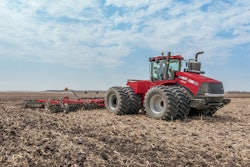No one wants to make a mistake when it comes to equipment maintenance, but it can, and does, occur. Sometimes it’s oversight; sometimes it’s trying to squeeze a few extra hours between maintenance intervals. Sometimes it’s just an honest mistake.
Recently, our equipment experts shared a few of the stories that stick out.
“A farm operator purchased bulk oil from a supplier and did not have dedicated containers to distribute oil from bulk storage to the equipment. Instead, they were using used herbicide containers. A farm employee, not identifying the difference between containers filled a hydraulic system with herbicide. It was an honest, but very costly mistake.”
BOTTOM LINE: Use appropriate containers with clear labels
“In the middle of harvesting soybeans, a customer had a catastrophic failure on the combine header. It took three days and $9,000 to repair. Upon inspection, the header still had the original filter installed more than five years into service and had nearly three times the suggested hours on the service interval.”
BOTTOM LINE: Stick to filter replacement schedules.
“A customer was very impatient in the winter months and started his tractor up to do chores and move bales. He proceeded to immediately drive to the bale yard and try to lift a very large hay bale. The heavy load, cold oil (like syrup) resulted in numerous blown seals, hoses, a failed lift cylinder and severe loader damage.”
BOTTOM LINE: Allow equipment to warm up properly, especially in extreme conditions.
“Years ago, I was working on a hydrostatic tractor. Machine performance was unacceptable with low power out of the tracks. The engine was checked and found to be delivering the needed power to the hydrostat pumps. The hydrostat pumps were checked and failed the efficiency check. Essentially, they had so much internal leakage there was not enough pressure being delivered to the hydrostat motors. Lines were capped to the motors and pump efficiency was tested again. By capping the motors, only the pumps were in the circuit. Pumps failed again. All signs pointed to the pumps needing to be replaced. On the last check we asked the owner when the last time they changed the hydrostat oil. The answer was they didn’t know they needed to change it. The recommended interval was 2,000 hours and the machine had 5,000 hours on it. Oil had broken down to the point it was no longer able to stay together at high pressure. Once an oil and filter change was performed, machine performance returned. However, significant damage was likely done by running the oil to that point.”










